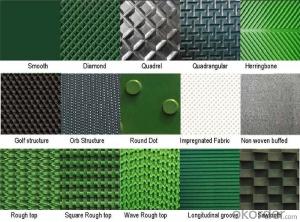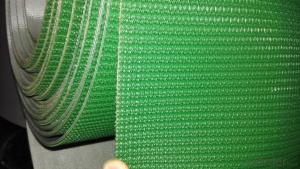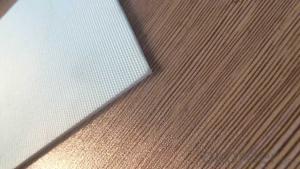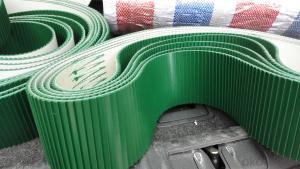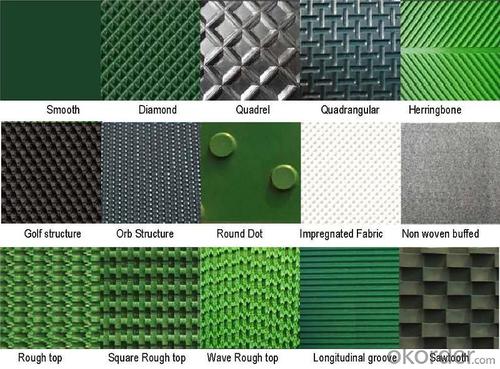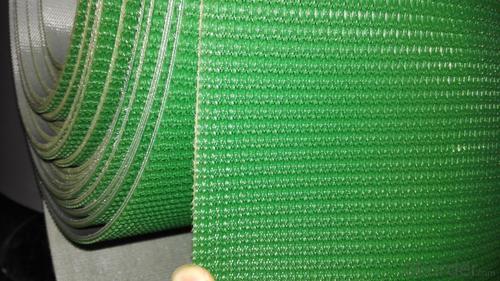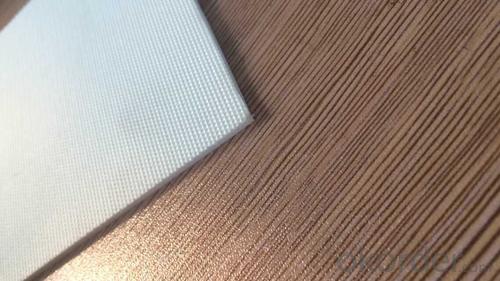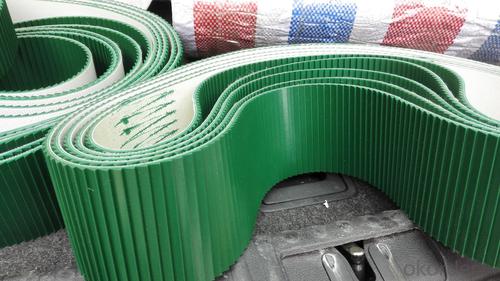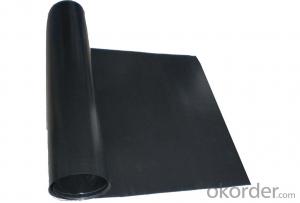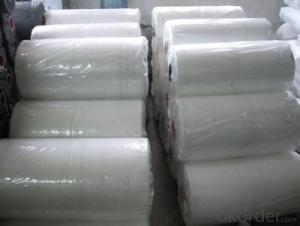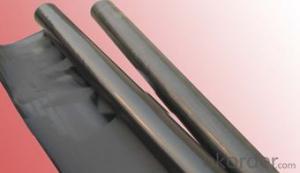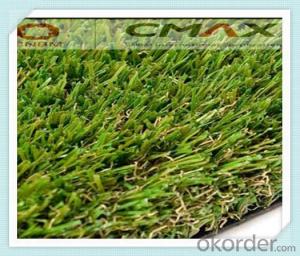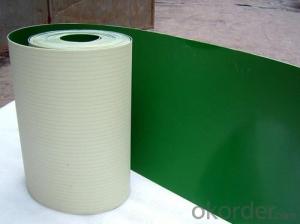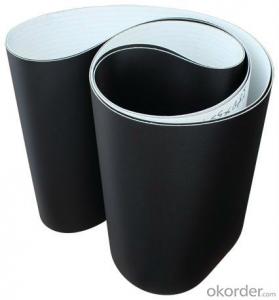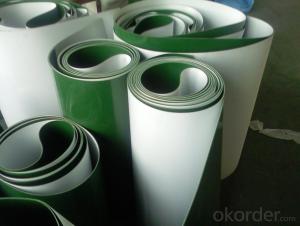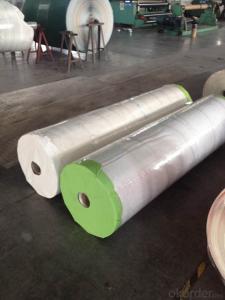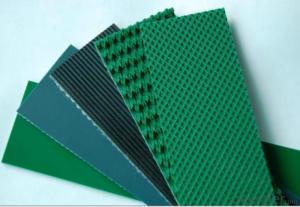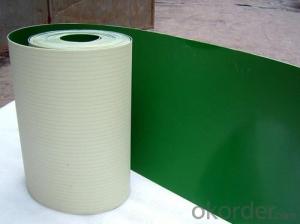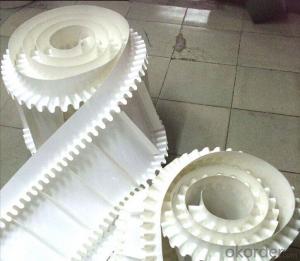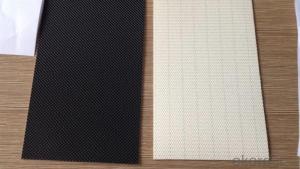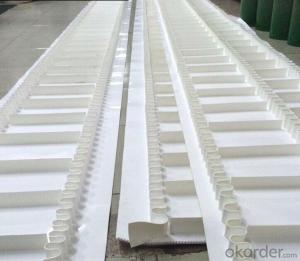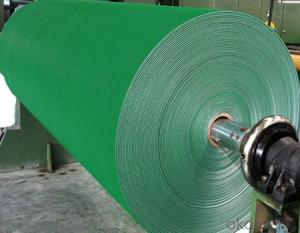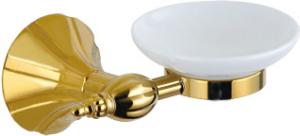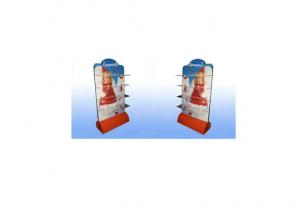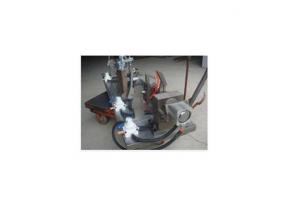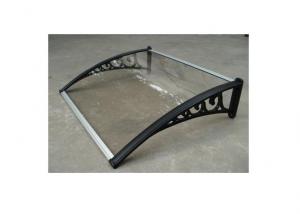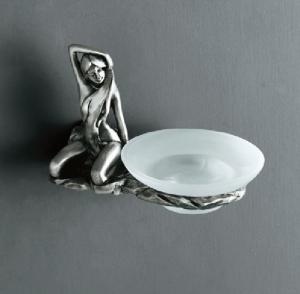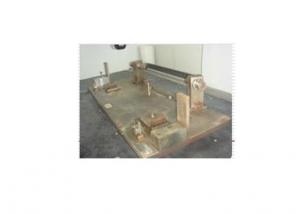PVC/PU Conveyor Belt with Different Surface Pattern
- Loading Port:
- China main port
- Payment Terms:
- TT OR LC
- Min Order Qty:
- 10 m²
- Supply Capability:
- 100000 m²/month
OKorder Service Pledge
OKorder Financial Service
You Might Also Like
PVC Conveyor Belt with Different Surface Pattern
Features:
A layer of cloth and a layer of glue, two layers of cloth and two layers of glue, three layers of cloth and three layers of glue, and so on. It can be customized according to your requirements.
1. Non-Conductive
2. Anti-Static
3. Resistant to fats, chemicals, oil fat and abrasion
4.Color:Apple Green,Petrol Green,Blue,Black,etc
5. Various surfaces with high, medium and low coefficient friction
Thickness: PVC Belting (1~7mm) PU Belting (0.8~4mm)
Width: 200mm ~ 4000mm
Appearance: Flat surface, diamond pattern, lawn pattern, golf pattern,etc.
Colors: Green, blue, gray, white, black, blue, dark green, transparent,etc.
Subsequent machining technology: It can add baffle, skirt, sponge, guide bar,etc.Specifications:

Advantages:
PVC: economical and practical, technology is mature. Non-toxic, odorless, environmentally friendly.
PU: abrasion resistant and corrosion.
Application:
PVC: Food, medicine, electronics, tobacco, printing, packaging, textile and other production lines belt.
PU: Most applicable to the food industry and other industries .
Photos
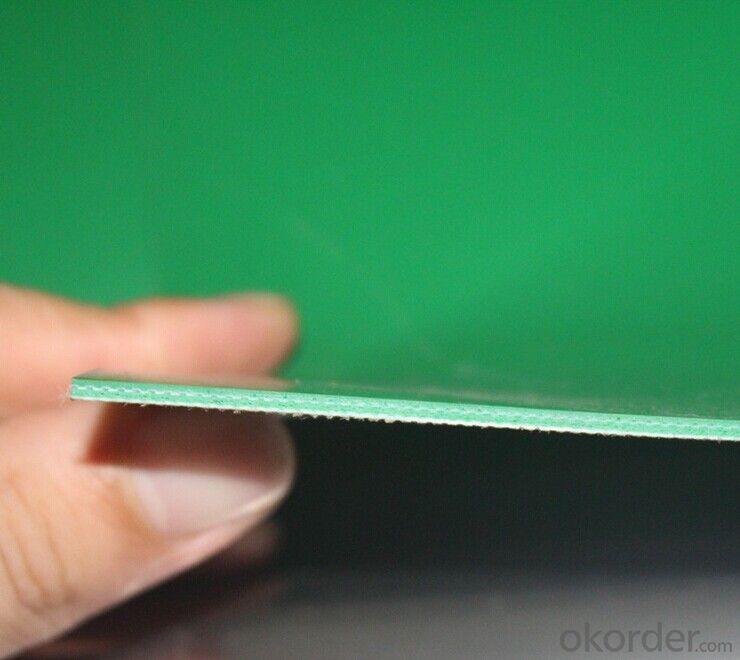
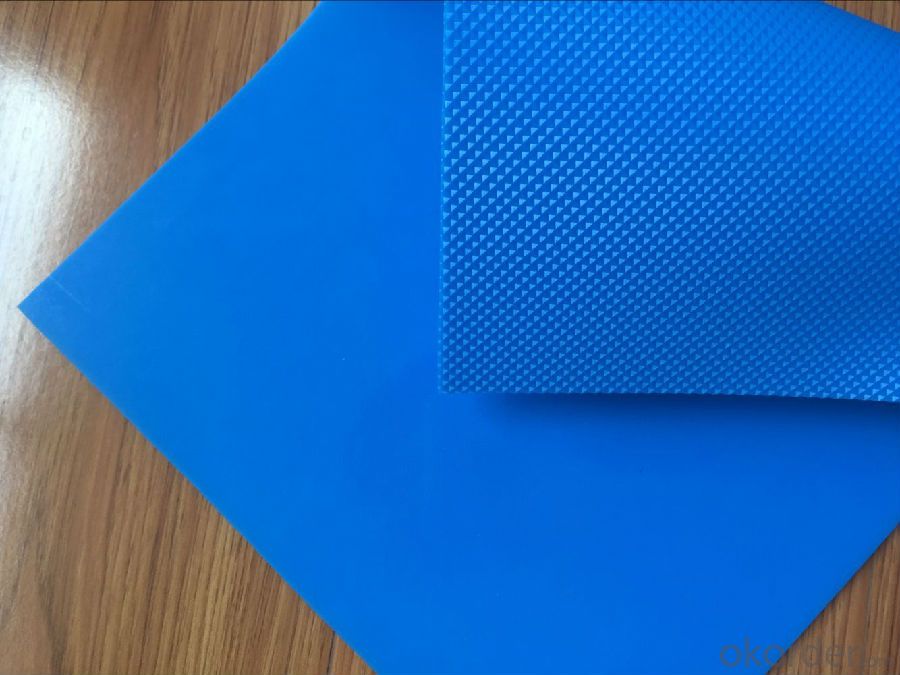
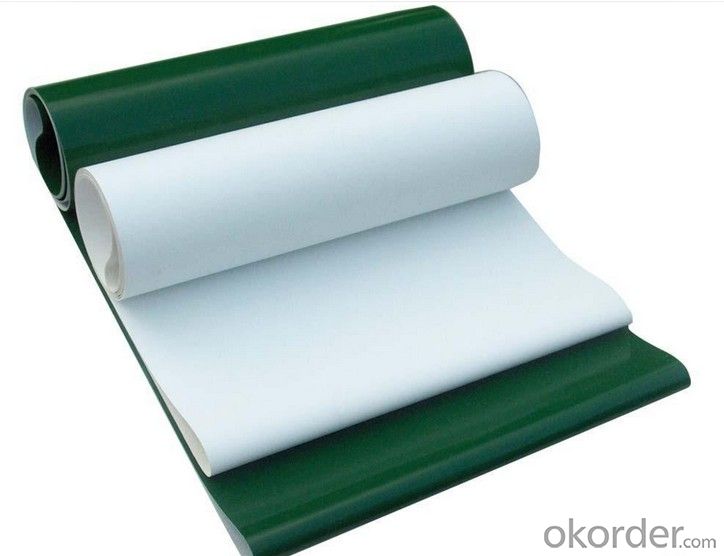
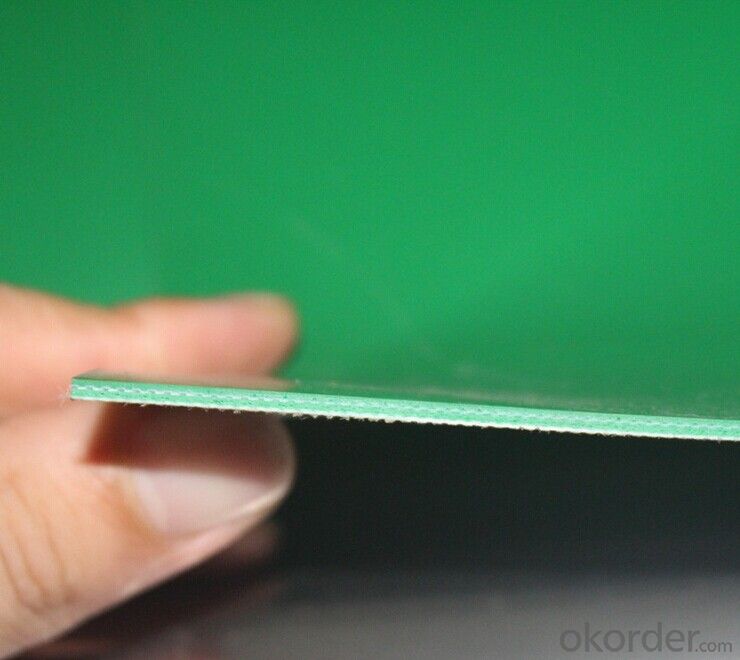
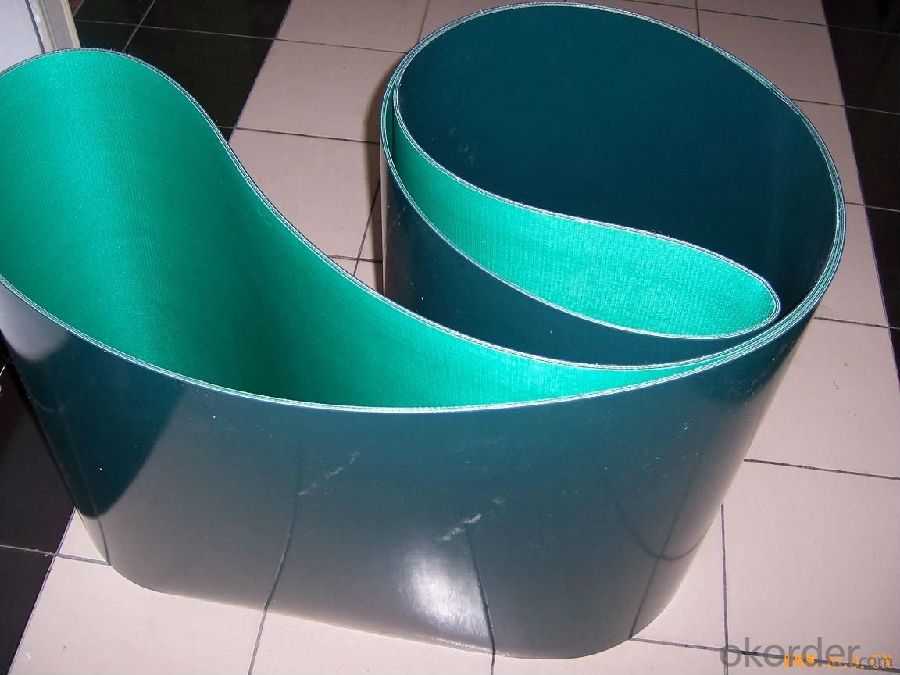
FAQ
Q: Can you do OEM?
A: Yes, we can do OEM products. It's no problem.
Q: How can I get some samples?
A: 1, We are honored to offer you samples. New clients are expected to pay for the courier cost, the samples are free for you, this courier cost charge will be deducted from the payment for formal order.
2, Regarding the courier cost: you can arrange a RPI (remote pick-up) service upon Fedex, UPS, DHL, TNT, etc. to have the samples collected; or inform us your DHL collection account. Then you can pay the freight direct to your local carrier company.
Q: How do you do regarding quality control?
A: Quality is priority? We always attach great importance to quality controlling from the very beginning to the very end:
1).All raw material we used are environmental-friendly;
2).Skilful workers care every details in handling the producing and packing processes;
3).Quality Control Department specially responsible for quality checking in each process.
Q.What are your payment terms?
A: Standard payment terms are 30%T/T,and balance upon the B/L copy .
L/C at sight is acceptable
Other payment terms can be negotiable.
If you want to find more details about the conveyor belt, you could make an Inquiry in okorder.com. Okorder.com provides you the products with best price and quality!
- Q: How does an olive net affect the labor required for harvesting?
- An olive net significantly reduces the labor required for harvesting by providing a convenient and efficient method to collect olives. Instead of manually picking olives from trees or using traditional methods like shaking or beating the branches, an olive net is spread around the base of the tree. When the olives are gently shaken or mechanically harvested, they fall onto the net, making it easy to collect them in large quantities. This eliminates the need for excessive bending, reaching, and climbing, thereby reducing physical strain and the number of workers needed for the task.
- Q: Do olive nets affect the taste or quality of the olives?
- Yes, olive nets can affect the taste and quality of the olives. Olive nets are used to protect the olives from pests and prevent them from falling to the ground, which can cause damage. However, if the nets are not properly installed or maintained, they can negatively impact the olives' flavor and quality. Nets that are too tight can cause bruising or deformation, while inadequate airflow can lead to moisture buildup and potential fungal growth. Therefore, proper installation and regular monitoring are essential to ensure minimal impact on the taste and quality of the olives.
- Q: Are olive nets easy to repair if damaged?
- Yes, olive nets are generally easy to repair if damaged. They are often made of durable materials like polyethylene or nylon, which can withstand some wear and tear. In case of small tears or holes, they can be easily patched up using repair kits or by stitching them together. However, extensive damage may require more significant repairs or even replacement of the net.
- Q: Can olive nets be used for olive tree bonsai training?
- Yes, olive nets can be used for olive tree bonsai training. These nets can help shape and guide the growth of the tree while protecting it from birds and other animals.
- Q: The use of various plastic materials
- GPPS modified polystyrene 204The transparency of 88-92%, refractive index 1.59-1.60, suitable for light products, dyeing is strong, non-toxic and tasteless, no fungus growth, high impact strength, resistance to acid and alkali resistant performance is good, not on the basis of solvent, excellent electrical properties, easy molding, moisture less than 0.02% can maintain the strength and size of high humidity, but the brittleness.Suitable plastic products: decorations, lighting signs, lampshades, stationery, transparent toys, daily necessities, instrument lenses, freezers and thermal insulation in the refrigerator (after foaming).
- Q: When was plastic invented?
- The plastic is made of monomers as raw materials, polymer by polyaddition or polycondensation polymerization (macromolecules), commonly known as plastic resin (plastics) or (resin), can freely change the composition and form style, composed of synthetic resin and filler, plasticizer, stabilizer, lubricant, pigment and other additives.
- Q: How do olive nets prevent olives from being damaged by human activities?
- Olive nets prevent olives from being damaged by human activities by creating a physical barrier between the olives and any potential harm. The nets are placed over the olive trees, effectively shielding the olives from direct contact with humans, reducing the risk of damage caused by harvesting, handling, or other human activities. This helps to preserve the quality and integrity of the olives, ensuring they remain undamaged and suitable for consumption or further processing.
- Q: Can olive nets be used on trees with low branches?
- Yes, olive nets can be used on trees with low branches. However, it may require some adjustment and careful installation to ensure that the nets are properly secured and do not get tangled or hinder the access to the lower branches.
- Q: What materials are olive nets typically made of?
- Olive nets are typically made of high-density polyethylene (HDPE) or nylon materials.
- Q: What size olive net is suitable for a small olive grove?
- The size of the olive net suitable for a small olive grove would depend on the number of olive trees and their spacing. Generally, a net with dimensions around 4 meters by 4 meters (13 feet by 13 feet) would be appropriate for a small olive grove. However, it is recommended to measure the specific dimensions of the grove and consult with a professional to ensure the right size is chosen.
Send your message to us
PVC/PU Conveyor Belt with Different Surface Pattern
- Loading Port:
- China main port
- Payment Terms:
- TT OR LC
- Min Order Qty:
- 10 m²
- Supply Capability:
- 100000 m²/month
OKorder Service Pledge
OKorder Financial Service
Similar products
Hot products
Hot Searches
Related keywords
